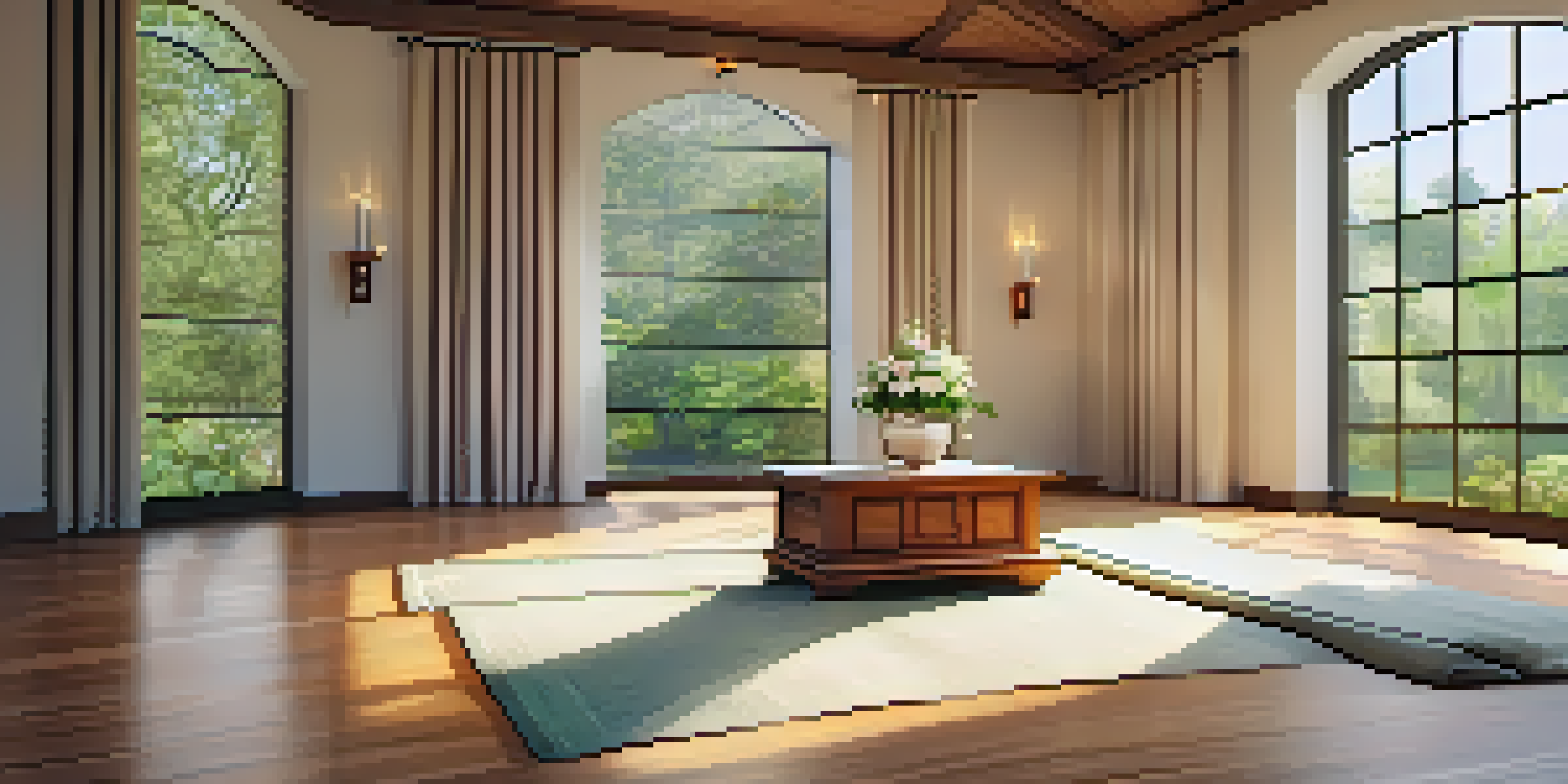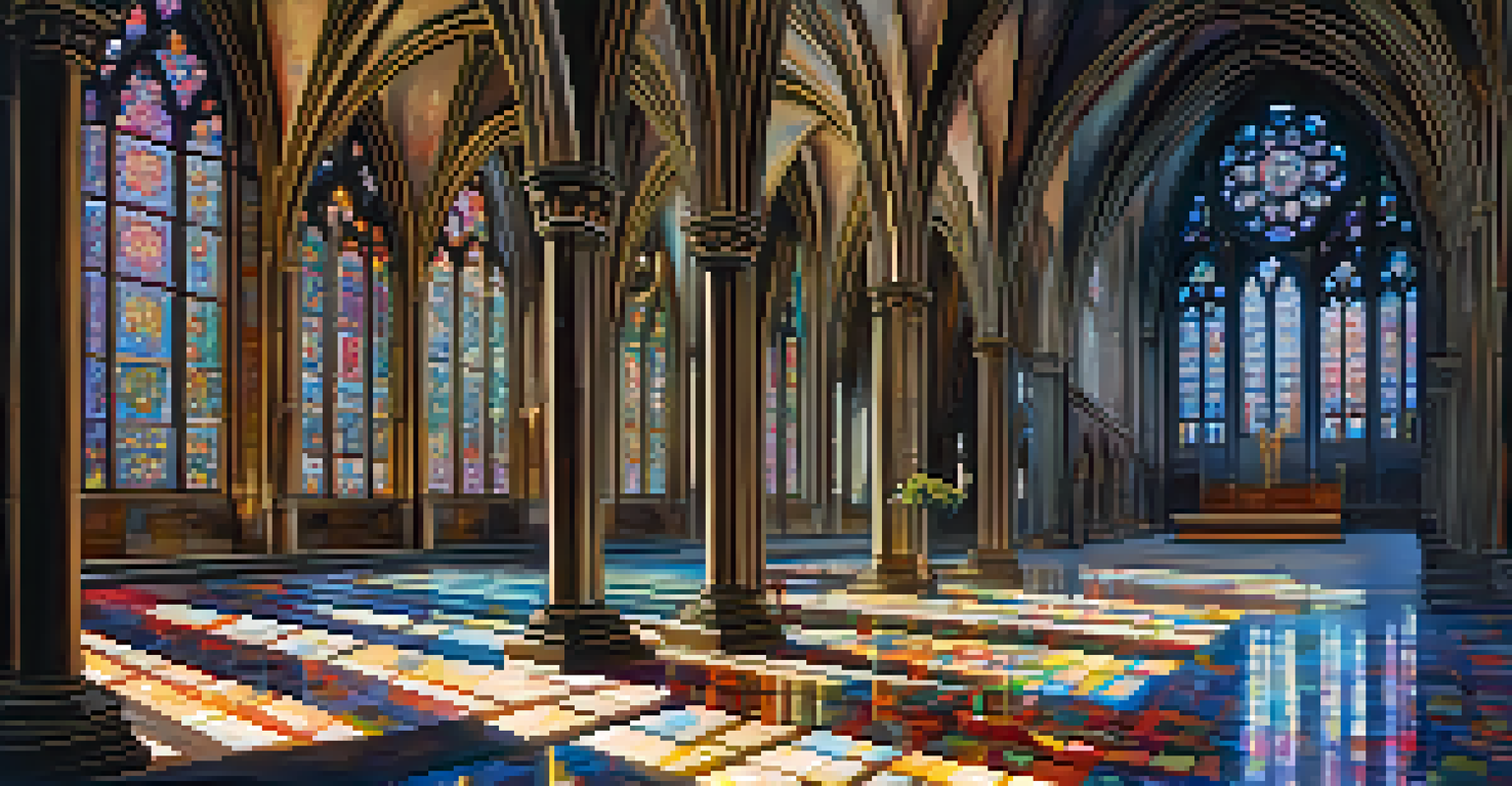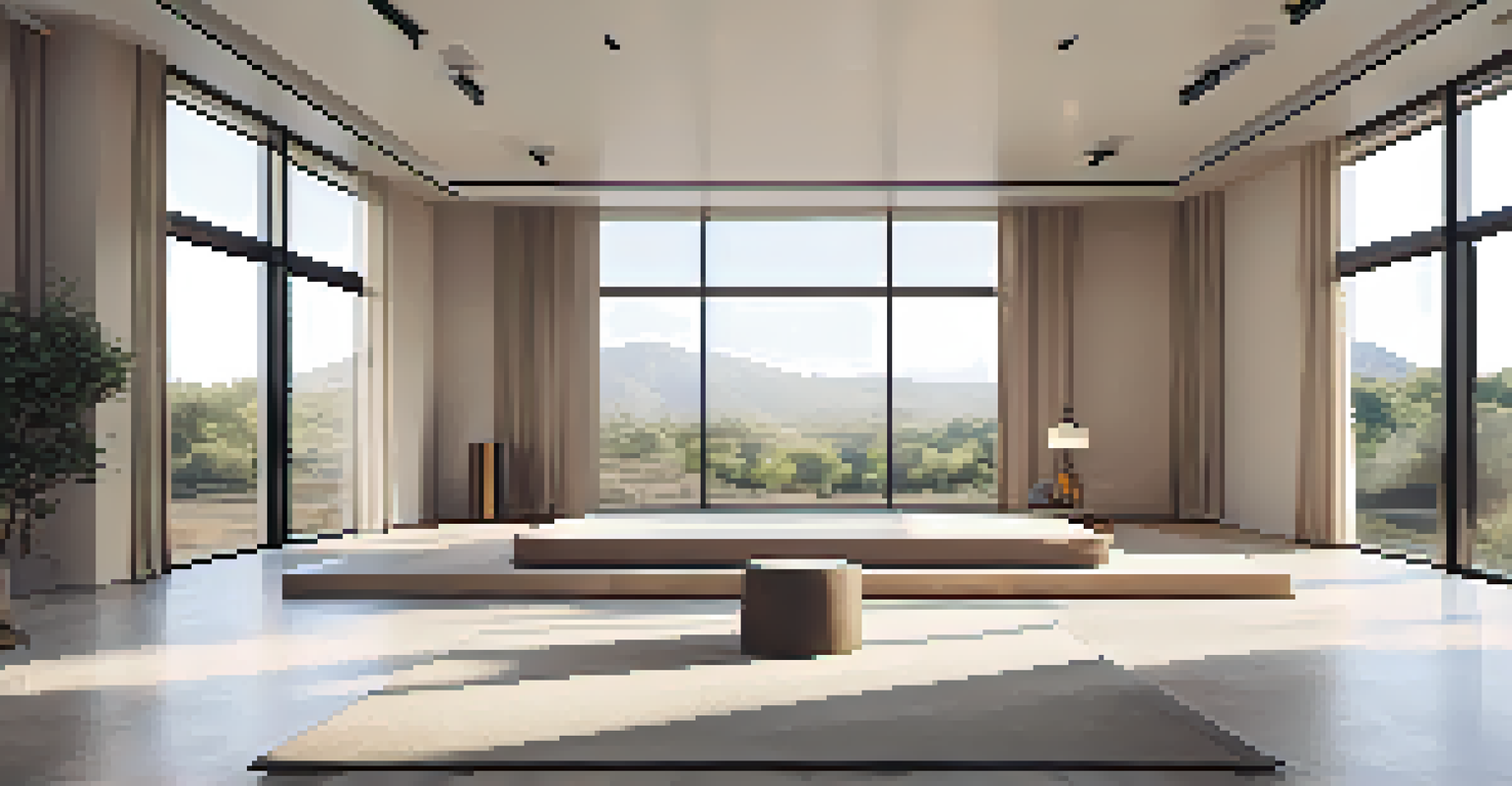The Intersection of Architecture and Spiritual Experience

How Architecture Influences Spirituality
Architecture has a profound impact on how we perceive spirituality. The design of a space can evoke feelings of tranquility, awe, or even fear, influencing our spiritual journey. Consider cathedrals with their soaring ceilings and intricate stained glass; they invite a sense of wonder and connection to the divine.
Architecture is the art of how to waste space.
In contrast, simple structures like a meditation room or a quiet garden can create an intimate atmosphere for reflection and peace. The materials, colors, and layout all play a crucial role in shaping our spiritual experiences. By thoughtfully crafting these environments, architects can foster a deeper connection between individuals and their beliefs.
Ultimately, architecture becomes more than just walls and roofs; it transforms into a vessel for spiritual exploration. This interplay between space and spirituality invites us to reconsider how we engage with the world around us.
Historical Perspectives on Sacred Architecture
Throughout history, various cultures have designed sacred spaces to reflect their beliefs. From ancient temples to modern places of worship, these structures often symbolize a community’s relationship with the divine. For instance, the Parthenon in Athens not only served as a temple but also as a representation of the city's values and ideals.

The architectural styles and elements used in these sacred spaces often carry deep meaning. For example, the use of light in Gothic cathedrals is symbolic of divine presence, illuminating the interior and guiding worshippers toward transcendence. This connection between design and spirituality showcases how architecture has evolved to meet the needs of the faithful.
Architecture Shapes Spirituality
The design of spaces, from cathedrals to meditation rooms, profoundly influences our spiritual experiences and connections.
As we explore these historical perspectives, we can see how architecture has served as a bridge between the earthly and the spiritual. Each era and culture has left its mark, shaping the way we experience the sacred today.
The Role of Nature in Spiritual Architecture
Nature plays a vital role in enhancing spiritual experiences in architecture. Many religious structures incorporate natural elements, creating a harmonious balance between the built environment and the outdoors. Think of a temple surrounded by lush gardens or a chapel with large windows that frame breathtaking views; these designs invite nature into the spiritual experience.
The design of a space is a reflection of the values and beliefs of its inhabitants.
This integration encourages a sense of peace and reflection, allowing individuals to connect with both their surroundings and their spirituality. The sounds of rustling leaves or the sight of a serene landscape can evoke feelings of calm and inspire deeper contemplation.
Moreover, architects are increasingly focusing on sustainable practices, recognizing that caring for the environment aligns with many spiritual beliefs. By designing spaces that respect and incorporate nature, they are fostering a more profound connection between people, the earth, and the divine.
Community and Shared Spiritual Spaces
Architecture not only shapes individual spirituality but also fosters community connections. Shared spiritual spaces, such as churches, mosques, or synagogues, serve as gathering points for collective worship, fostering a sense of belonging. These communal experiences can be transformative, as they bring people together in pursuit of a shared belief system.
The design of these spaces often reflects the values and traditions of the community, creating an environment that feels welcoming and inclusive. For example, open layouts encourage interaction and engagement, while intimate corners offer private moments for reflection.
Nature Enhances Spiritual Spaces
Incorporating natural elements in architecture fosters a sense of peace and deeper reflection, bridging spirituality with the outdoors.
By promoting social interaction within a spiritual context, architecture enhances the communal aspect of faith. This interconnectedness enriches the spiritual experience, reminding us that we are part of something larger than ourselves.
Modern Architecture and Spirituality
In the modern era, architects are reimagining how we experience spirituality through innovative designs. Many contemporary places of worship challenge traditional forms and embrace new materials, techniques, and philosophies. This evolution reflects the changing nature of belief and the diverse ways people seek spiritual fulfillment today.
For instance, minimalistic designs often emphasize simplicity and serenity, stripping away distractions to focus on the spiritual experience. Spaces like the Zen temples in Japan highlight this approach, fostering tranquility through their uncluttered aesthetics and natural materials.
As we witness this shift, it's essential to recognize that modern architecture can still evoke profound spiritual experiences. By blending creativity with intention, architects continue to explore the boundaries of spirituality in design.
The Psychological Impact of Sacred Spaces
The psychological effects of sacred spaces are significant, influencing how individuals engage with their spirituality. Research shows that environments designed for worship can evoke feelings of peace, safety, and inspiration. These emotional responses play a crucial role in how people connect with their beliefs and find solace in their spiritual journeys.
For example, spaces that incorporate elements like high ceilings and natural light can create an uplifting atmosphere, encouraging introspection and connection with the divine. Conversely, designs that feel cramped or chaotic may hinder one's ability to engage spiritually.
Future Trends in Spiritual Design
Emerging trends in spiritual architecture include the use of technology and inclusivity to cater to diverse beliefs and enhance experiences.
Understanding these psychological impacts allows architects to create spaces that enhance spiritual experiences. By prioritizing emotional well-being in design, we can foster environments that support individuals in their quest for meaning and connection.
Future Trends in Spiritual Architecture
As we look to the future, several trends are emerging in the realm of spiritual architecture. One notable trend is the incorporation of technology in enhancing spiritual experiences. Virtual reality, for instance, offers new ways to explore sacred spaces and engage with spirituality without physical constraints.
Additionally, architects are increasingly considering inclusivity in their designs, creating spaces that cater to diverse beliefs and practices. This approach fosters understanding and acceptance, allowing individuals from various backgrounds to find common ground in their spiritual journeys.

Ultimately, the future of spiritual architecture is bright and full of potential. As we adapt to our changing world, these innovative approaches will continue to shape how we experience and express our spirituality.